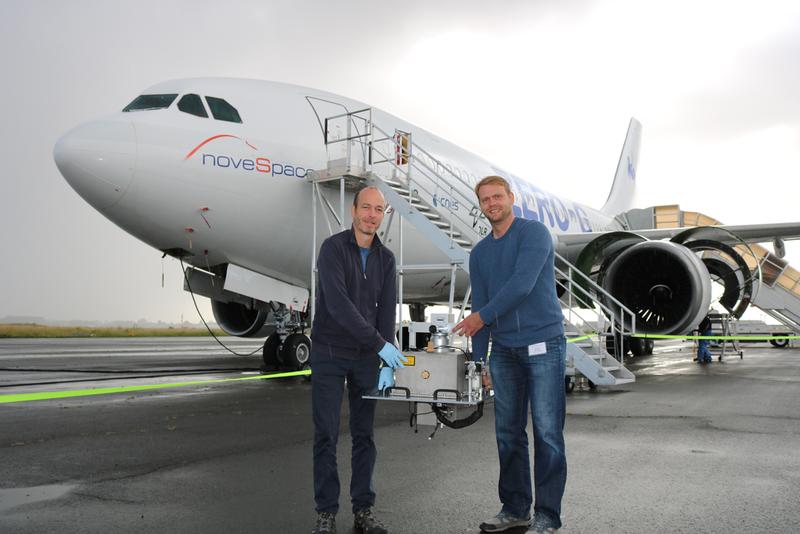BAM and Clausthal University of Technology are testing 3D printing in zero gravity
Bordeaux, 11.09.2017. The Bundesanstalt für Materialforschung und-prüfung (BAM) believes that astronauts who will themselves manufacture tools or spare parts in space using 3D printing will become a reality. BAM, together with the Clausthal University of Technology, is conducting tests on powder-assisted additive production under microgravity conditions between 11 and 15 September. During the 30th Parabolic Flight Campaign of the German Aerospace Centre (DLR), the scientists will be testing how a 3D printer using powder as a starting material can be stabilised in weightlessness.
In the "Powder-based additive manufacture under weightlessness" project BAM and the TU Clausthal aim to manufacture components by applying layers of a flowable powder (printing). For this purpose a 3D component, depicted by computer-controlled software by dividing it into thousands of virtual layers, is built up by the repeated application of powder layer by layer. The focus of the planned parabolic flight tests is on the application of powder layers as this is very difficult in weightless conditions. In order to stabilise the powder bed with the printed component without gravitation, scientists want to use an air-gas flow which is sucked through the powder layers.
"3D printing has never been explored in weightlessness – BAM, DLR and TU Clausthal are pioneers," explains Prof. Jens Günster, Project Manager and Head of BAM’s Ceramic Processing and Biomaterials Division. The aim of the research project is to expand and further develop individual manufacturing methods for components needed during a space mission. In addition, the process used is also of great interest for industrial applications on earth: "A higher packing density of the powder particles and an improved layer application of finer, non-flowable powders are two major advantages compared to conventional layer application methods," adds Günster.
Some of the methods used here have already been patented internationally: they are based on two patent families that have been jointly patented by BAM and TU Clausthal within Germany and by BAM alone outside Germany.
Prof. Günster, who is also a professor in high-performance ceramics at the TU Clausthal, leads a team including Dr Andrea Zocca and BAM Ph.D. students Jörg Lüchtenborg and Pedro Lima, TU Clausthal Ph.D. student Thomas Mühler, and DLR Ph.D. student Marc Sparenberg. This is another milestone in the successful collaboration between BAM, DLR and TU Clausthal following the "Self-assembled Multifunctional Structures for Adaptive High-Performance Lightweight Construction" Ph.D. programme, which was approved last year.
For more information about the project "Powder-based additive manufacture under weightlessness" and the parabolic flight tests of BAM and TU Clausthal visit https://www.bam.de/parabelflug.
BAM and DLR will report live on the parabolic flights from the Bordeaux site and on the tests under hashtag #BAMzeroG and #DLRparabelflug during the flight week from 11th to 15th of September.
Please also visit Twitter (https://twitter.com/VenioQuinque) and
YouTube (https://www.youtube.com/channel/UCkkjYaE8y9NdOgl2Fy_Qiuw).
Weitere Informationen:
https://www.bam.de/parabelflug
https://twitter.com/VenioQuinque
https://www.youtube.com/channel/UCkkjYaE8y9NdOgl2Fy_Qiuw
Die semantisch ähnlichsten Pressemitteilungen im idw


